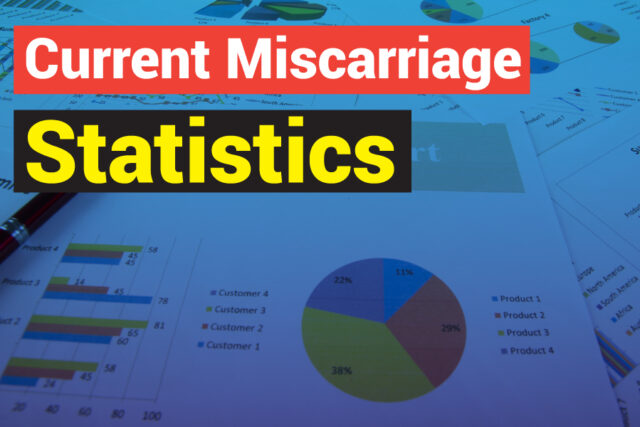As we delve into the realm of reproductive health, it’s crucial to acknowledge the prevalence and impact of miscarriages. These heartbreaking events, often shrouded in silence and misunderstanding, affect countless individuals and couples worldwide. In this comprehensive article, we will explore the latest current miscarriage statistics, shedding light on the realities, factors, and trends surrounding this sensitive topic.
Miscarriages, also known as spontaneous abortions, refer to the involuntary termination of a pregnancy before the 20th week of gestation. While the experience can be emotionally and physically taxing, it is essential to understand that miscarriages are relatively common, and in most cases, they are not caused by something the mother did or didn’t do.
By examining the latest data and insights, we aim to raise awareness, dispel misconceptions, and provide a supportive platform for those affected by miscarriages. Join us as we navigate through the intricacies of this subject, offering a compassionate and informative perspective.
Understanding The Prevalence Of Miscarriages
The prevalence of miscarriages is often underestimated due to the stigma and lack of open discussions surrounding the topic. However, the statistics paint a sobering picture. According to the latest studies, it is estimated that approximately 10-20% of known pregnancies end in miscarriage. This statistic highlights the widespread nature of this experience, emphasizing the need for greater understanding and support.
It’s important to note that these figures may even be higher, as many miscarriages occur before a woman realizes she is pregnant. The emotional toll and physical implications of miscarriages cannot be understated, making it crucial to address this issue with sensitivity and empathy.
Factors That Contribute To Miscarriages
While the exact causes of miscarriages are not always clear, several factors have been identified as potential contributors. These include:
Chromosomal Abnormalities: A significant proportion of miscarriages, estimated to be around 50-60%, are attributed to chromosomal abnormalities in the embryo or fetus. These abnormalities can arise spontaneously during the process of cell division and are often not related to the parents’ genetic makeup.
Maternal Age: As a woman’s age increases, the risk of miscarriage also rises. This is primarily due to the increased likelihood of chromosomal abnormalities in the embryo or fetus as a woman ages.
Medical Conditions: Certain medical conditions, such as hormonal imbalances, uterine abnormalities, autoimmune disorders, and chronic diseases, can increase the risk of miscarriage.
Environmental And Lifestyle Factors: Exposure to toxins, smoking, excessive alcohol consumption, and obesity have been linked to an increased risk of miscarriage.
Common Misconceptions About Miscarriages
Despite the prevalence of miscarriages, numerous misconceptions and myths persist, often adding to the emotional burden experienced by those affected. Let’s address some of these common misconceptions:
- Myth: Miscarriages are caused by stress or physical activity. Reality: While excessive stress and strenuous physical activity should be avoided during pregnancy, they are rarely the sole cause of miscarriage. Most miscarriages are due to chromosomal abnormalities or other underlying medical conditions.
- Myth: Miscarriages are a sign of weakness or personal failure. Reality: Miscarriages are not a reflection of an individual’s strength or capabilities. They are a natural occurrence that can happen to anyone, regardless of their physical or emotional well-being.
- Myth: Miscarriages are rare and uncommon. Reality: As mentioned earlier, miscarriages are relatively common, affecting a significant proportion of pregnancies. However, due to the stigma and lack of open discussions, their prevalence is often underestimated.
By addressing these misconceptions, we can foster a more supportive and understanding environment for those affected by miscarriages.
Key Insights From The Latest Current Miscarriage Statistics
The latest current miscarriage statistics offer valuable insights into the patterns and trends surrounding this experience. Here are some key highlights:
- Recurrence Rates: According to studies, the risk of experiencing a second miscarriage after one previous miscarriage is approximately 20-25%. However, this risk decreases with each subsequent successful pregnancy.
- Impact Of Maternal Age: As a woman’s age increases, the risk of miscarriage also rises. For example, the risk of miscarriage is around 10% for women aged 20-30 years, but it increases to 20% for women aged 35-39 years and up to 50% for women aged 40 and above.
- Timing Of Miscarriages: Most miscarriages occur within the first trimester of pregnancy, with the highest risk being between 6-8 weeks of gestation.
- Racial And Ethnic Disparities: Studies have shown that certain racial and ethnic groups may have a higher risk of miscarriage compared to others, highlighting the need for further research and targeted support.
These insights not only provide a better understanding of the patterns and risk factors associated with miscarriages but also serve as a foundation for developing more effective prevention and support strategies.
Trends In Miscarriage Rates Over The Years
While miscarriages have always been a part of the human experience, the reported rates and trends have fluctuated over time. Here’s a brief overview of the trends in miscarriage rates:
Historical Trends: Historically, miscarriage rates were likely higher due to factors such as poor maternal health, lack of access to proper medical care, and environmental factors.
Recent Trends: In recent decades, advancements in medical technology, improved prenatal care, and increased awareness have contributed to a slight decrease in miscarriage rates in developed countries.
Geographical Variations: Miscarriage rates can vary considerably across different regions and countries, influenced by factors such as access to healthcare, socioeconomic status, and cultural attitudes towards pregnancy and miscarriage.
Impact Of Age On Miscarriage Rates
One of the most well-established risk factors for miscarriages is maternal age. As women age, the risk of miscarriage increases due to various physiological and genetic factors. Here’s a closer look at the impact of age on miscarriage rates:
- Women Under 35: For women under the age of 35, the risk of miscarriage is generally lower, ranging from 10-15%.
- Women Aged 35-39: As women approach their late 30s, the risk of miscarriage increases to around 20-25%.
- Women Aged 40 And Above: For women aged 40 and above, the risk of miscarriage can be as high as 50% or higher, primarily due to the increased likelihood of chromosomal abnormalities in the embryo or fetus.
It’s important to note that while age is a significant risk factor, many women in their late 30s and 40s have successful pregnancies. However, it is essential for older mothers to be aware of the potential risks and to seek appropriate medical care and support throughout their pregnancy journey.
Understanding The Emotional And Physical Toll Of Miscarriages
Miscarriages can have a profound impact on an individual’s emotional and physical well-being. It’s essential to acknowledge and validate the range of emotions and experiences that accompany this loss. Here’s a closer look at the emotional and physical toll of miscarriages:
Emotional impact
- Grief And Sadness: Miscarriages can trigger intense feelings of grief, sadness, and loss, similar to the grief experienced after the death of a loved one.
- Guilt And Self-Blame: Many individuals struggle with feelings of guilt and self-blame, even though miscarriages are often beyond their control.
- Anxiety And Depression: The emotional trauma of a miscarriage can lead to anxiety, depression, and other mental health challenges.
- The Strain On Relationships: Miscarriages can put a strain on relationships, as partners may grieve differently or struggle to provide adequate support.
Physical Impact:
- Bleeding And Cramping: Miscarriages can involve heavy bleeding, cramping, and physical discomfort, similar to a heavy period.
- Hormonal Imbalances: The sudden drop in hormone levels after a miscarriage can cause physical symptoms such as fatigue, mood swings, and breast tenderness.
- Risk Of Complications: In some cases, miscarriages can lead to complications such as infection or the need for surgical intervention.
It’s crucial to recognize the emotional and physical toll of miscarriages and to provide appropriate support and resources to those affected. This includes access to counseling, support groups, and medical care tailored to their specific needs.
Support And Resources For Individuals And Couples Experiencing Miscarriages
Navigating the aftermath of a miscarriage can be challenging, but there are various support systems and resources available to help individuals and couples through this difficult time:
Medical Support
- Seek guidance from healthcare professionals, such as obstetricians, gynecologists, and counselors, who can provide medical advice, emotional support, and guidance on coping strategies.
- Attend follow-up appointments to monitor physical recovery and discuss future pregnancy plans.
Emotional Support
- Seek counseling or join support groups to connect with others who have experienced similar losses. Sharing experiences and emotions can be a powerful healing process.
- Engage in self-care activities that promote emotional well-being, such as exercise, mindfulness practices, or seeking support from loved ones.
Online Resources
- Utilize reputable online resources, such as websites, forums, and social media groups, to access information, connect with others, and find support.
- Be cautious of misinformation and seek guidance from trusted sources.
Workplace Support
- Discuss your needs with your employer and explore options for time off, flexible work arrangements, or access to counseling services provided by the company.
Community Support
- Explore local support groups, religious organizations, or community centers that offer support and resources for individuals and couples affected by miscarriages.
Conclusion
As we conclude our exploration of the latest current miscarriage statistics, it’s evident that miscarriages are a significant and often underestimated issue. By raising awareness and fostering open conversations, we can break down the stigma and provide much-needed support to those affected. The emotional and physical toll of miscarriages cannot be understated, and it’s crucial to acknowledge the unique challenges and experiences of each individual and couple.
By understanding the prevalence, factors, and trends surrounding miscarriages, we can better equip ourselves to provide compassionate support and effective resources. Let us commit to creating a society where those affected by miscarriages feel supported, understood, and empowered to navigate their journey with dignity and grace. Together, we can make a difference by raising awareness, dispelling misconceptions, and offering a helping hand to those in need. Remember, you are not alone in this journey. By embracing empathy, understanding, and a commitment to support, we can create a more compassionate and supportive environment for those affected by miscarriages.














